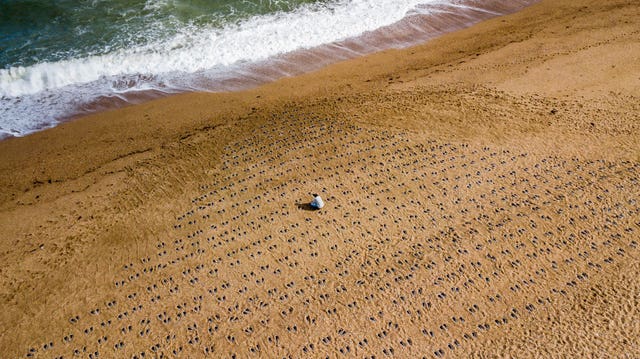D-Day plans could have been changed by near-miss, new research suggests
New research has revealed that the death toll of Exercise Tiger could have been far greater.

An ill-fated rehearsal for the Normandy landings that resulted in the deaths of 749 American servicemen could have been more devastating and may have changed the shape of D-Day, according to new research.
Exercise Tiger – a secret mission to prepare for the Allied invasion of Normandy – took place in Lyme Bay, off the coast of south Devon and Dorset, in late April 1944.
More than 700 US troops were killed when the convoy carrying them was attacked by heavily-armed German motor torpedo boats known as S-Boats.
In an attack lasting less than an hour, three Allied vessels were torpedoed – with two of them subsequently sinking, resulting in an official death toll of 551 US Army and 198 US Navy personnel.

This is because a second group of Allied invasion ships, making its way along the English Channel, narrowly avoided becoming embroiled in the disaster.
If that had happened, it could have resulted in a greater loss of life and the destruction of several tank landing ships (LST) that were crucial for the planned Normandy invasion.
Dr Harry Bennett, associate professor of history at the University of Plymouth, discovered the findings during an investigation into Exercise Tiger.
He believes plans for D-Day could have been altered if the second group of Allied invasion ships had been attacked.
“Exercise Tiger is already one of the more tragic stories of the war,” said Dr Bennett, an expert in maritime and military operations during the Second World War.
“It went largely unreported at the time because the allied commanders didn’t want to give away details of tragedy.
“It finally became more common knowledge in the 1980s, but these new findings show for the first time that less than 30 minutes after three American ships had been torpedoed to devastating effect, a second incident occurred in which forces of three of the world’s most powerful wartime navies stumbled upon each other in mid-Channel, only narrowly avoiding a pitched battle.”
He posted about it on social media and was contacted by the family of a US naval serviceman, Ensign William H Hogan, who was serving in the UK in 1944.
The family provided transcripts of official records that helped to establish what happened that night.
Records show that on the night of April 27 to 28, Hogan’s ship – LST 51 – was part of a convoy codenamed Obstacle, making its way from Falmouth in Cornwall to Portland on the Dorset coast.
As they sailed towards Lyme Bay, they saw flashes in the sky from the action where the Exercise Tiger convoy of LSTs was coming under attack by nine German S-boats.
Dr Bennett analysed official records kept by the US, British and Germany navies to correlate each ship’s position in the Channel.
He discovered that, as the Germans made their escape from the attack on the convoy, they were pursued and eventually fired upon by the British destroyers.
In their flight to the south, the German S-boats and the British destroyers converged – with the British opening fire, at exactly the point when they met the Obstacle convoy heading towards Portland.
In brief moments of confusion, the British destroyers opened fire towards the Obstacle convoy thinking the dark shadows of the ships were the Germans.
“Ironically the tenacity and ferocity shown by British forces perhaps prevented an even bigger tragedy that night,” Dr Bennett said.
“Running slap bang into a second convoy on their run home the German S-Boats, if they had torpedoes remaining, might have been in a position to inflict serious damage.
“The Nelsonian tradition of ‘engage the enemy more closely’ and get stuck in meant that the S-Boats were not about to hang around that night.”
Dr Bennett said the nine S-boats at sea that night carried 36 torpedoes between them, with only around five finding their targets.
He added: “The potential for the tragedy of Exercise Tiger that night to have assumed even bigger proportions is obvious.”
– The research will be revealed in greater detail at FUTURES2020, a virtual festival of discovery taking place on November 27 and 28.





